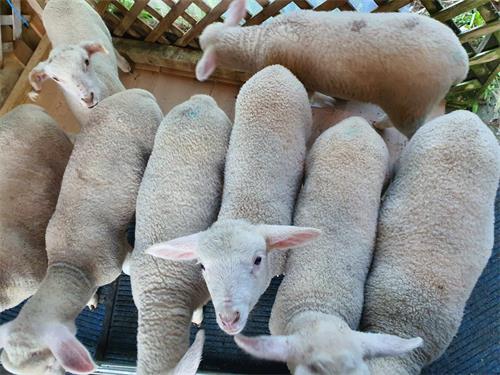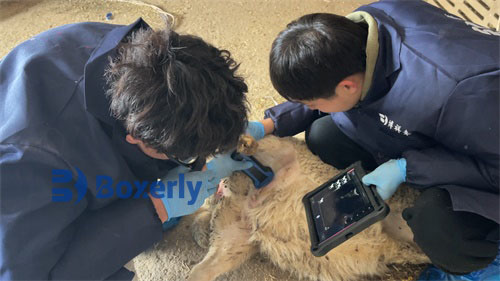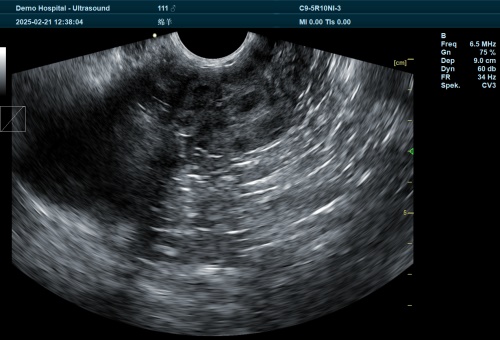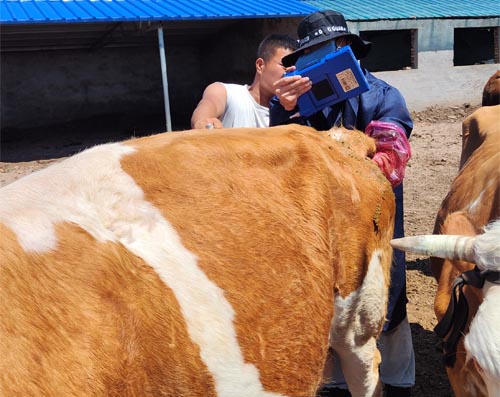Growing sheep, managing their breeding cycles, and keeping track of lambing time—that’s part of everyday life for any livestock keeper. Having a solid handle on reproductive stages in ewes makes a real difference in flock health and productivity. And one of the best tools I’ve found is a Veterinary ultrasound system. It’s easy to forget how cool it is that we can peek inside an animal without turning them inside out. I’ve picked up a few tricks using it in sheep reproduction work and thought it might help another farmer—especially those new to small ruminants—get started.

Why a veterinary ultrasound system matters in sheep reproduction
When I talk to other farmers, they often say, “I wish I could tell exactly when ewes are pregnant, or spot twins early, or avoid empty ewes going through all that feeding.” That’s exactly where a good ultrasound setup comes in. Even if you’ve used it before in other animals, sheep have particular rhythms and challenges—your probe skills have to be nimble and your interpretations careful, especially with those little fetuses.
Here’s what a simple HTML table might show—just to lay out the basic stages and what I use the ultrasound system to check:
| Stage | What I look for with ultrasound | Action based on findings |
|---|---|---|
| Early gestation (days ~25–45) | Gestational sac, heartbeat, number of fetuses | Confirm pregnancy, plan nutrition and space |
| Mid gestation (days ~60–90) | Fetal growth, viability, position | Adjust feed, flag for multiple births |
| Late gestation (days ~110–140) | Fetal size, amniotic fluid, presentation | Prepare assistance, set lambing pens |
That table is just my cheat-sheet. It keeps things tidy when I’m explaining to helpers or interns what to expect. And it reminds me how quickly things change over days.
Early gestation: catching pregnancy and spotting multiples
Once I scan around day 30 or so, the gestational sac is visible. Even a small probe that fits between the ewe’s ribs can show that little flicker of life—heartbeat, usually. That’s when I can say “we’ve got one,” or—joy!—“we’ve got twins.” Multiples are golden for the farm’s output, but they mean higher nutrition demands and more hands-on care at lambing. The ultrasound system helps me get ready for that early.
Mid-gestation: tracking development and readiness
When the fetuses are growing fast—around days 60 to 90—I look for how they’re positioned and whether the size fits the usual curves of growth. If one lamb looks small, I may shift the feed to support, or if they’re big twins, I’ll think about managing space and lambing pens a bit differently. The ultrasound system gives me that window to see inside and make decisions that aren’t guesswork anymore.
Getting ready for lambing
Closer to due dates—say days 110 to 140—position matters a lot. Breech or transverse presentations could mean trouble, especially if I’m not around at midnight. Spotting odd positions allows me to plan intervention or have an experienced hand ready. Sometimes I’ll check amniotic fluid levels to make sure it’s not too low—because dry lambing can be just as problematic as stuck lambs. The ultrasound system gives peace of mind and saves scrambling in the middle of the night.

Benefits that matter on the farm
Non-invasive and low-stress: The ewe barely notices, especially when you handle calmly. No sedation needed.
Repeatable checks: I can scan multiple times during gestation to see changes. That rhythm helps with planning and feeding.
Early twin detection: Feeding twins well and prepping lambing pens early makes a huge difference in lamb survival.
Reduced losses: I catch non-pregnant ewes early and can re-mate them or give them other roles before wasting feed.
A quick comparison
| Without ultrasound | With ultrasound system |
|---|---|
| Guesswork on pregnancy status | Know pregnancy status early |
| Feed all ewes same | Tailor nutrition per pregnancy or multiples |
| Surprise lambing issues | Lambing plan informed by fetal position |
Something foreign farmers often mention
I’ve swapped notes with sheep farmers across places—from New Zealand to Scotland to the U.S.—and most of them highlight how scanning twice, at early and late stages, pays off. One friend in New Zealand told me she never misses a scanning session because she “saves at least one lamb per set because I know when to pull or help.” Another guy in the U.K. said it “makes flock management feel so much less like a gamble.”
Veterinarians tend to stress operator skill and probe selection. A good-quality convex probe with a frequency around 5 MHz works best for adult ewes. Others use higher-frequency linear probes for ewes around 35–45 days when fetuses are small but near the surface.

Tweaking feed and management
Once I know a ewe is carrying twins, I raise her energy and protein slightly—those fetuses demand extra. And I shift her to pens with deeper bedding, so lambing becomes softer and less stressful.
Scanning also helps pick out ewes who might have lost pregnancy or are late breeders; I can decide whether to rebreed or treat. It’s not just about lamb numbers—it’s about making every feeding dollar count, avoiding “silent” empty ewes sucking up resources.
A note about equipment care
Ultrasound systems need cleaning, probe gel, and occasional servicing. Wiping the probe with veterinary-approved disinfectant between animals matters—sheep are prone to skin microbes. A cracked probe housing or dusty connectors can mess signal or picture quality. I keep a cleaning schedule on the wall—weekly checkups keep things working when I need them.
Wrapping up
On my farm, using an ultrasound system for sheep reproduction transformed how I handle pregnancy, nutrition, and lambing prep. No more guesswork—just clearer chances to act, feed right, and intervene when needed. It feels a lot less like “farming by hope” and a lot more like thoughtful, timely care.
link: https://www.bxlimage.com/nw/1289.html
tags: Ultrasound System Sheep Reproduction






